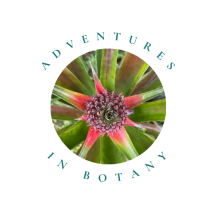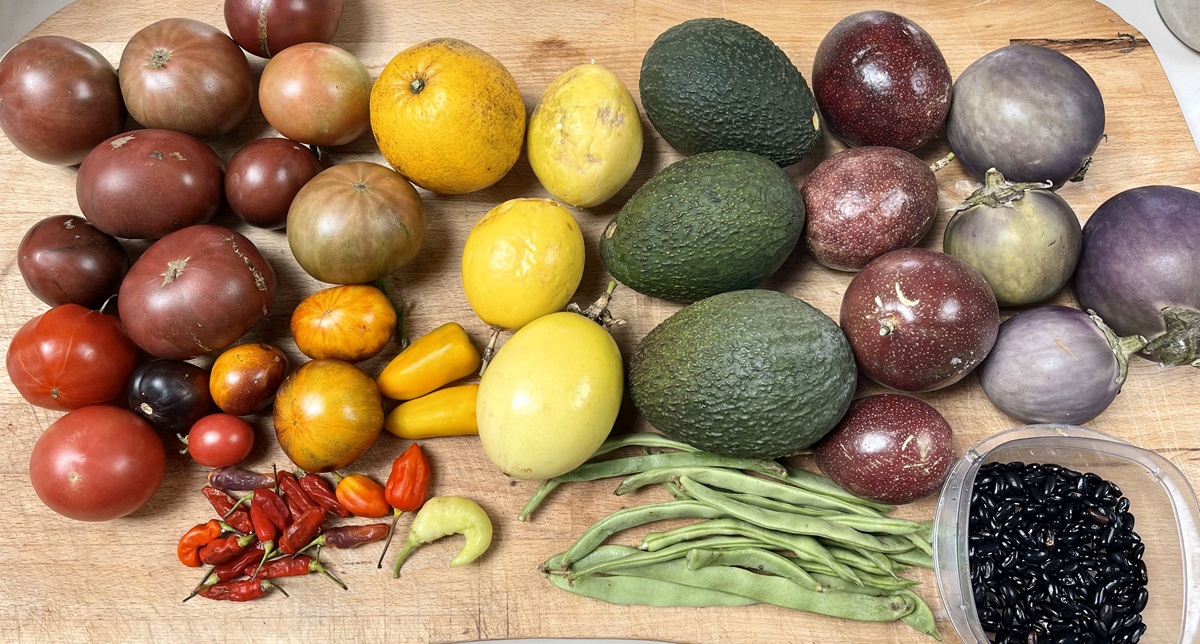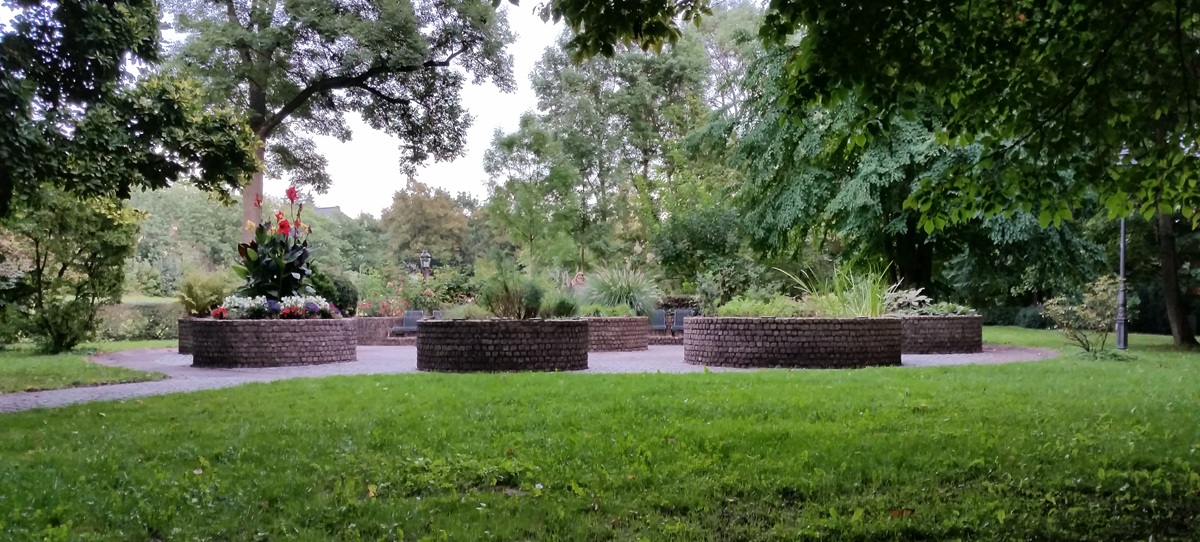A Step-by-Step Guide for Beginners
Lately, life feels more unpredictable than ever. Between economic shifts, supply chain issues, and rising food prices, many of us are looking for ways to feel more self-sufficient. Growing your own food isn’t just about saving money—it’s about having a reliable, nourishing source of fresh produce, no matter what’s happening in the world.
I started growing more of my own food because I wanted to feel more connected to what I was eating. There’s something deeply satisfying about walking outside, picking fresh herbs or tomatoes, and knowing exactly where they came from. If you’ve ever wanted to grow your own food but weren’t sure where to start, this guide will walk you through it step by step—no prior experience needed!
Step 1: Choose Your Growing Space
You don’t need a huge backyard to grow food. Whether you have a small lanai, a sunny window, or just a few feet of outdoor space, you can start a garden. Don’t let a lack of space deter you, you can grow food just about anywhere.Options for Different Spaces:
- Backyard: Raised beds, in-ground garden plots, or container gardening.
- Lanai (Balcony/Patio): Grow bags, vertical planters, or containers.
- Indoor Windowsill: Small pots are great for herbs, microgreens, or dwarf vegetable varieties.
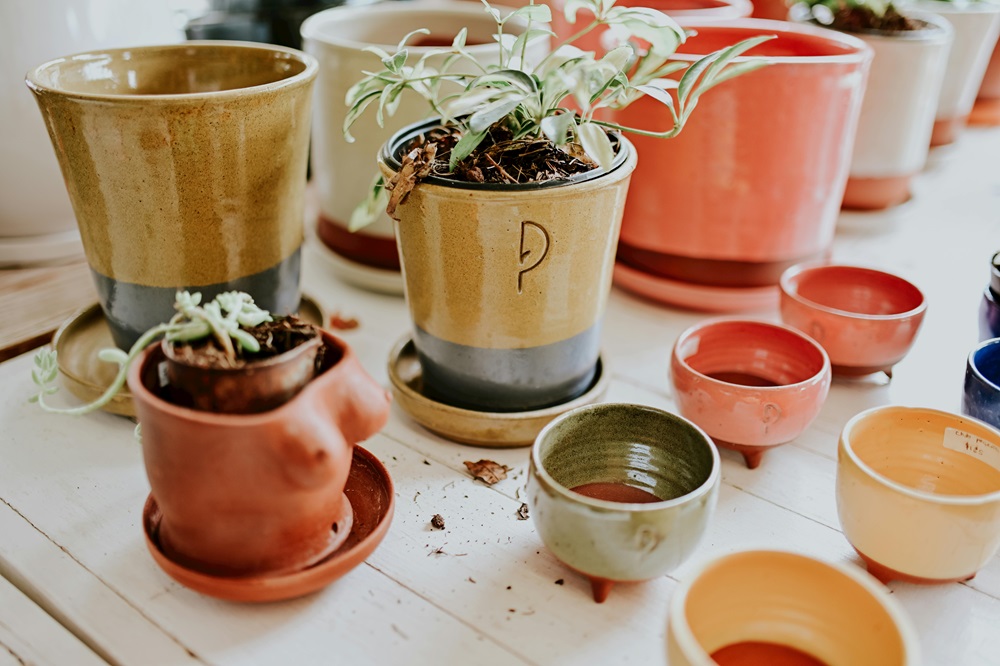
Step 2: Pick Easy-to-Grow Crops
For beginners, it’s best to start with plants that are low-maintenance and high-reward. Here are a few great options:
- Leafy Greens (Lettuce, Spinach, Kale): Quick-growing and continuous harvests.
- Herbs (Basil, Mint, Parsley, Chives): Perfect for windowsills and great for cooking.
- Tomatoes (Cherry or Roma): Grow well in containers and produce lots of fruit.
- Radishes: Ready to harvest in about a month, making them great for beginners.
- Zucchini or Cucumbers: High-yielding and easy to care for.
- Strawberries: Perennial plants that keep producing year after year.
Keep in mind depending on where you live, some plants may be easier to grow than others. While in most places, zucchini is one of the easiest things to grow, it has a reputation for being difficult here in Hawaii.
🔹 Personal Tip: My first food growing success was basil. I kept it in a small pot by my kitchen window, and it thrived! It was a confidence boost that made me excited to grow more.
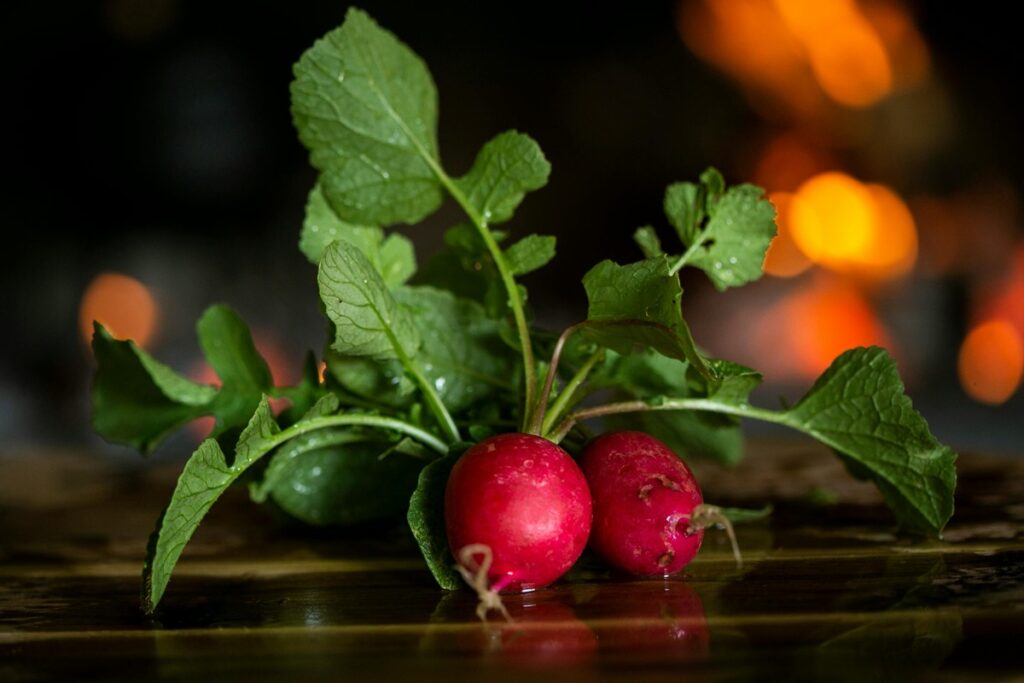
Step 3: Prepare Your Soil
Healthy plants start with healthy soil. If you’re planting in the ground or a raised bed, mix in compost or organic matter to improve nutrients. For containers, use a high-quality potting mix. Every climate is slightly different, and the “perfect soil” will depend on where you are, what you’re growing and how you grow it. But a mix of potting soil and compost is a great starting point for most people in most places.
Soil Basics:
- In-Ground or Raised Beds: Mix compost and organic fertilizer into existing soil.
- Containers: Use a well-draining potting mix (avoid plain garden soil) and add a little compost.
- Acid-Loving Plants (e.g., blueberries): Add peat moss or sulfur to adjust pH.
🔹 Personal Tip: I make my own potting mix using coconut coir, potting soil, homemade compost, and perlite. It holds just the right amount of moisture for my climate. Every area is different, so experiment to find your “perfect” soil mix. And as always, if you have questions or want some advice, check out the Adventures in Botany Community on Facebook and ask away!
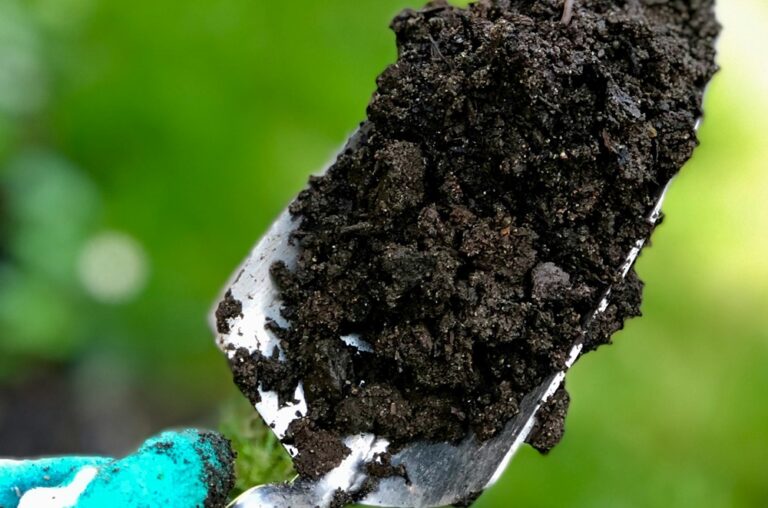
Step 4: Plant Your Seeds or Seedlings
Decide whether to start from seed or purchase small plants (seedlings) from a local nursery. This is completely a personal choice. If you don’t have the patience to start seeds, buying seedlings is a great option. If you want to plant many different varieties, starting seeds is more economical. If you’re new to starting seeds, check out my seed starting guide here.
Best Choices for Seeds vs. Seedlings:
A few plants can be slower to start from seed and some can be a little finicky, so I have a few suggestions for plants that are easier to start from seed and some that might be easier to buy as seedlings.
- Start from Seed: Lettuce, carrots, radishes, beans, peas, cucumbers.
- Buy Seedlings: Tomatoes, peppers, herbs (basil, thyme, rosemary).
How to Plant:
- Read the seed packet for depth and spacing.
- Keep soil moist but not soggy.
- Provide adequate sunlight (most veggies need 6+ hours a day).
- Label your plants to keep track of what’s growing.
🔹 Personal Tip: I love planting seeds and I plant just about everything from seed. For beginners try things like radishes and green beans from seed, they grow fast providing an instant confidence booster for new gardeners! For things like peppers and tomatoes, you might want to start with seedling plants, because they take longer to sprout and get big enough to transplant.
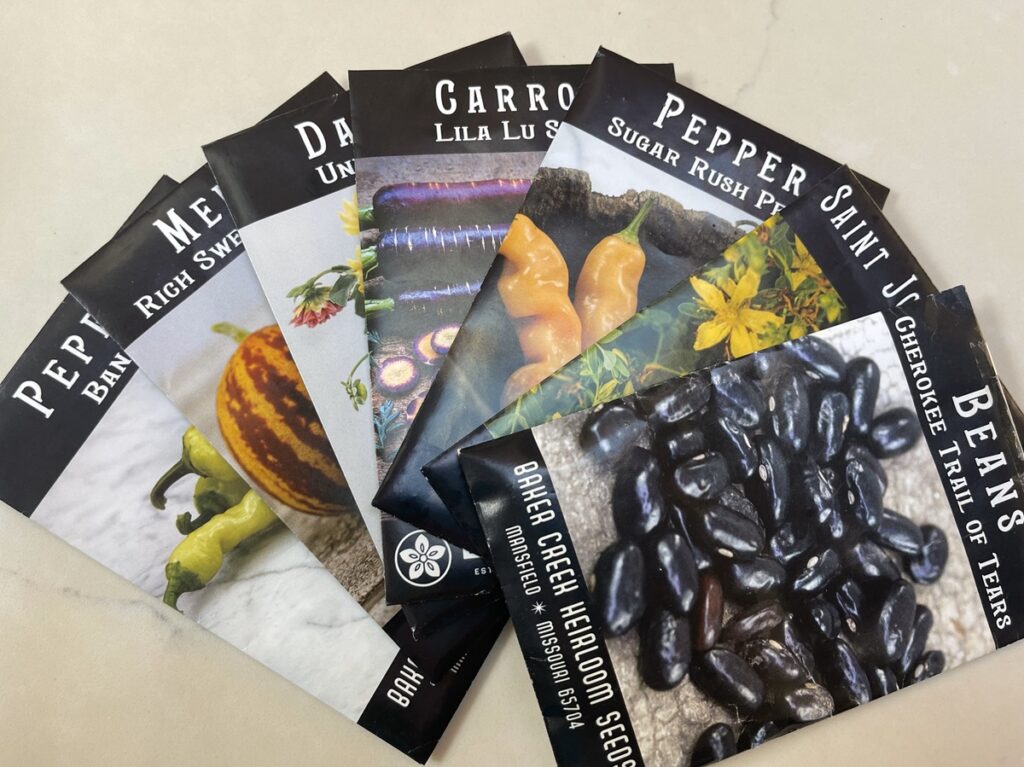
Step 5: Water and Care for Your Plants
Watering might be a little tricky for beginners. Too much water can cause root rot, and too little can dry out plants. Finding the sweet spot takes some observation. Keep an eye on your plants and you’ll soon be able to tell when they’re happy and when they need more or less water.
Watering Basics:
- Morning watering is best to prevent evaporation.
- Check soil moisture by sticking your finger 1-2 inches into the soil. If dry, water.
- Container plants dry out faster and may need watering daily in hot weather.
🔹 Personal Tip: For seeds and tiny plants, it’s important to keep them even moist all the time. As plants get larger, it’s better to water less frequently but deeper, this helps plants grow deeper roots and become more drought resistant.
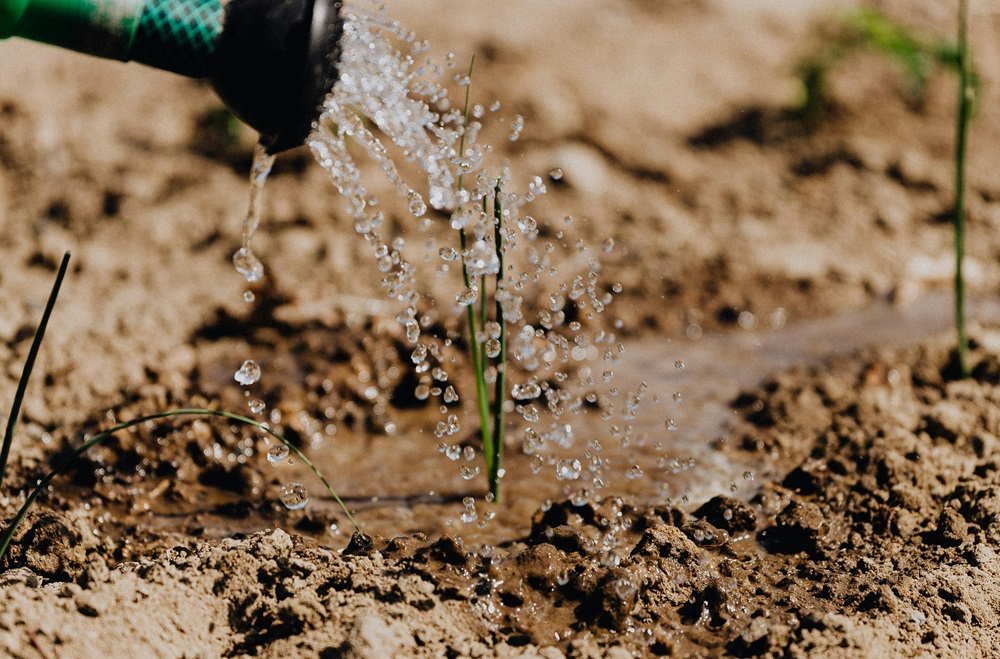
Step 6: Harvest and Enjoy Your Homegrown Food!
One of the most rewarding parts of gardening is the first harvest! Each plant has different harvesting methods:
- Leafy Greens: Pick outer leaves so the plant keeps growing.
- Tomatoes & Peppers: Harvest when “blushed” (starting to color) and slightly firm.
- Herbs: Snip leaves regularly to encourage more growth.
🔹 Personal Tip: I harvest a little bit every day, if I wait and harvest just once a week, some veggies, like tomatoes and peppers, are past their prime and are much more likely to attract pests. I usually wait to harvest things like lettuce, herbs, carrots, and celery until I’m ready to use them. I really enjoy getting ready to make a meal by going outside and harvesting what I need for the meal.
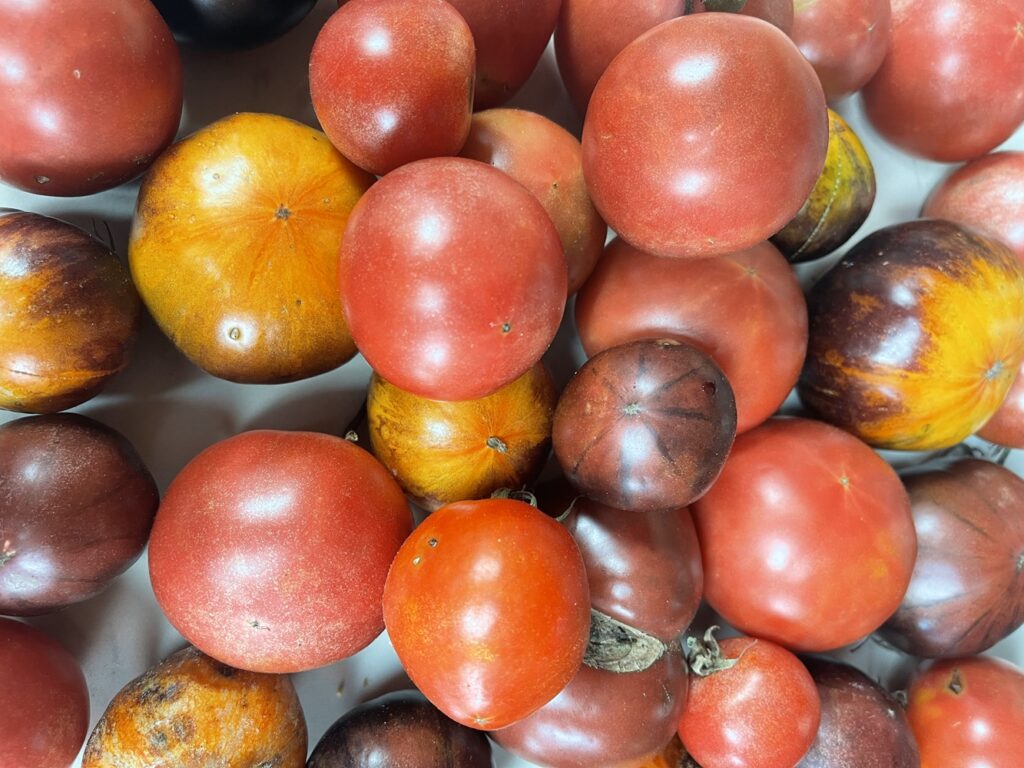
Final Thoughts: Start Small, Grow Big
Gardening isn’t just about food—it’s about connection, resilience, and joy. Whether you’re growing herbs on a windowsill or tending a full backyard garden, every little bit of homegrown food makes a difference.Start today: Pick one plant, get some soil, and start growing. Your future self will thank you.
